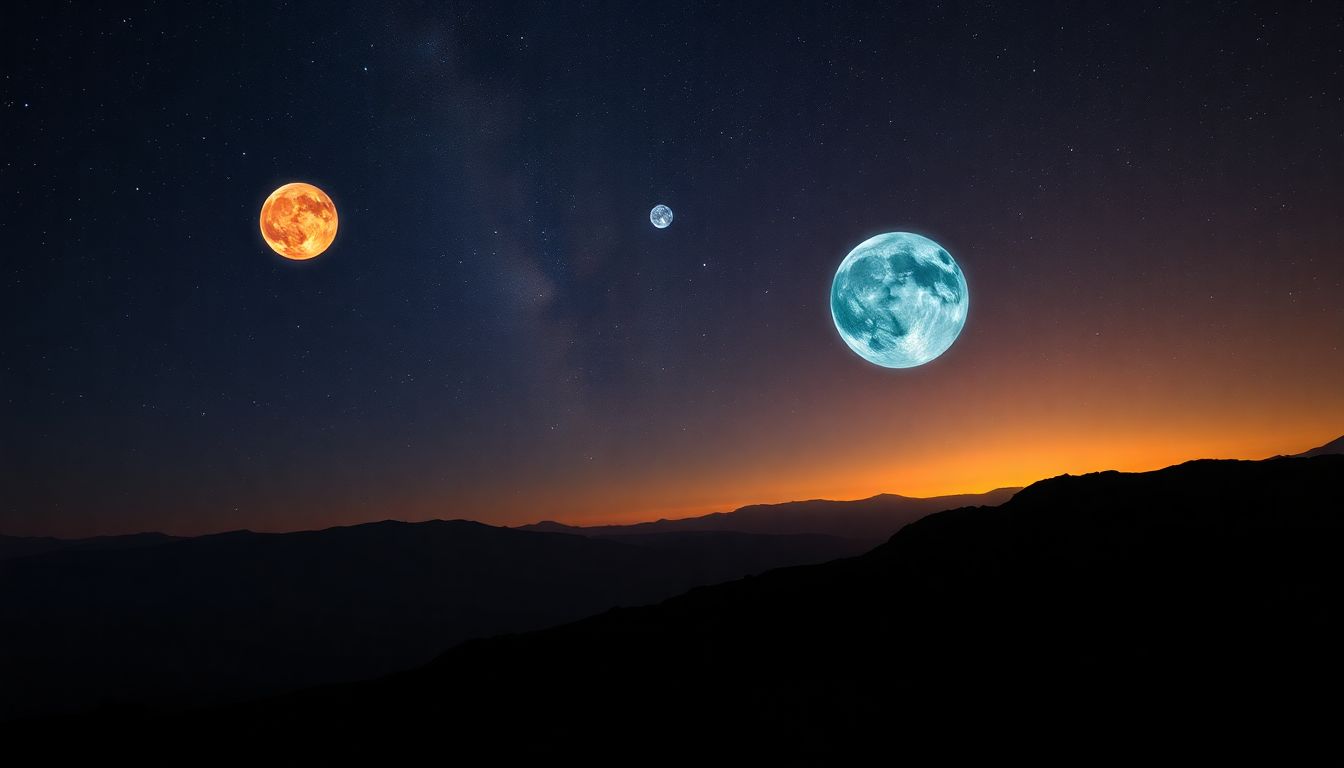
Why Do Some Planets Look Like Bright Stars at Night?
Introduction
Have you ever gazed up at the night sky and wondered why some planets shine so bright they look just like stars? It’s a common question for many stargazers. The glow of certain planets can be so intense that they seem to blend into the night’s twinkling stars. This makes you ask: why do some planets appear as bright, pinpoint lights while others look less impressive? The answer lies in a mix of brightness, distance, and how planets reflect sunlight. Understanding these factors can turn your night sky viewing into a real eye-opener.
Understanding the Basics of Planetary Brightness
What Makes a Celestial Object Bright?
When we see celestial objects shining in the sky, what makes them appear bright? Scientists measure brightness with something called apparent magnitude. The lower the number, the brighter the object. For example, a star with a magnitude of -1 is brighter than one with +4. Planets can be surprisingly bright due to their size and close proximity to Earth.
While stars are distant suns that shine with their own light, planets only reflect sunlight. This makes their brightness more dependent on their position and the sunlight they reflect. The more sunlight they bounce back, the more they shine in our sky.
The Role of Distance and Size
How close a planet is to Earth directly affects how bright it looks. The nearer a planet, the more luminous it seems. While size also matters—larger planets tend to reflect more sunlight—they aren’t always the brightest. For example, tiny Mercury can shine very brightly because of its closeness and surface reflectivity.
The Importance of Illumination and Phase
The amount of sunlight hitting a planet and its phase shape how bright it appears. Think of the Moon: it looks full, half, or new depending on the angle of sunlight. Similar phases exist for planets. When a planet is at or near opposition, it’s fully illuminated from our viewpoint, making it appear brighter and larger.
Why Some Planets Look Like Bright Stars
Brightness Levels of Different Planets
Some planets are real show-offs in the night sky. Venus often outshines everything, reaching magnitude -4.4, shining brighter than most stars. Jupiter is another bright planet, with a maximum magnitude of -2.9. Mars, although not as bright as Venus, can still flash bright red or orange. Mercury, though small, can look dazzling when it’s close to Earth. Saturn, with its rings, shines more softly but still glows enough to be mistaken for a star at times.
Reflectivity and Composition
What’s behind their brightness? It’s mainly about how planets reflect sunlight. Venus has thick clouds of tiny droplets that bounce back sunlight like a mirror, making it glow like a giant, shiny pearl. Mars shows a reddish hue because of iron-rich dust on its surface. Jupiter’s cloud tops reflect sunlight well, while Saturn’s icy rings add to its glow.
Relative Position in the Night Sky
Where a planet is in its orbit makes a difference. When planets are far away from the Sun or on the side of their orbits away from Earth, they appear dimmer. The brightest view comes when a planet is at opposition — opposite the Sun in our sky. At this point, it’s closest and fully lit, shining like a bright star.
Factors Contributing to the Star-Like Appearance
Apparent Size and Angular Diameter
To our eyes, planets often appear as tiny dots, not big disks. They seem like star points because their size is too small for us to see a disk. Stars are just point sources of light, so planets at a distance look similar—bright dots with no visible size. This similarity leads to a star-like appearance.
Atmosphere Effects and Twinkling
Earth’s atmosphere adds to the star-like look. When light passes through layers of air that shift and swirl, stars appear to twinkle. While planets usually twinkle less because they are brighter and bigger, they can sometimes seem to shimmer or shine so bright that they look like stars.
Magnitude and Visual Perception
Our eyes are good at picking out bright points against dark backgrounds. Bright planets can seem as tiny as stars when viewed with the naked eye. If the sky is dark and clear, these planets stand out even more thanks to light contrast and our brain’s perception.
Expert Insights and Practical Tips
Insights from Astronomers
Astronomers agree that Venus and Jupiter are often mistaken for bright stars. They advise beginners to look for these planets as they climb high in the evening or early morning sky, especially when they’re at their brightest.
How to Better Observe Planets
Using binoculars or small telescopes reveals the disk of planets, confirming they’re not stars. The best times to view planets are when they’re at their brightest, such as during opposition or elongation. During these moments, planets shine most prominently.
Tools and Resources for Sky Watching
Apps like Stellarium or SkyView help locate planets in the sky. Websites like NASA’s Night Sky is Clear offer real-time sky maps. With a little planning, you can spot any planet that appears as a bright star and enjoy the view with clarity.
Conclusion
Some planets look like bright stars because of their brightness, closeness, and how they reflect sunlight. Their size, phase, and position in the sky all play a role in their star-like appearance. By understanding what makes these planets shine so brightly, you can appreciate the night sky even more. Grab your binoculars, use a star map, and go see these dazzling worlds—each is a bright beacon in our vast universe.

